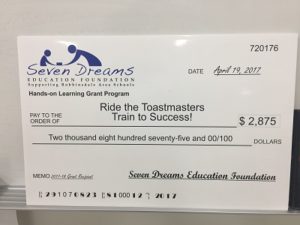- MN ABE Connect
- Archive
- Encouraging Speaking and Listening in ABE
 February 7, 2019
February 7, 2019
Encouraging Speaking and Listening in ABE
Colleen Crossley and John Trerotola, TeachersAccording to a recent Education Week article, the ability to communicate verbally is highly valued by employers (Gewertz, Catherine.“Skills Top Employer Wish Lists. But Schools Don’t Teach Them.” Education Week, January 23, 2019). Such skills are thus essential to our students’ future educational and workplace success, yet are too often not explicitly taught in public schools; this is likely to be true in ABE as well.
As noted in the article, a recent survey revealed that employers need workers who have strong communication skills and can adapt their conversation to a variety of workplace scenarios. Such “strong speaking skills” have even surpassed reading, writing, critical thinking, problem solving and others in those most sought by employers.
While Minnesota ABE teachers have become increasingly proficient at navigating and implementing CCR Standards since their roll-out several years ago, incorporating the Speaking and Listening Standards into classroom routines often takes a backseat to those for ELA and math. In this article, we will offer ideas on how we are addressing the standards at the Robbinsdale Adult Academic Program (AAP). We hope to encourage ABE teachers at all levels to think about and more intentionally plan curriculum offerings that incorporate their consistent, regular use.
Using Speaking and Listening Standards to meet student needs
 In 2017, several staff at the Robbinsdale AAP began to think about how to better meet students’ needs vis-a-vis the Speaking and Listening Standards. As a result, we applied for and received grant funding to establish an official on-site Toastmasters Club, the Crystal Clear Communicators.
In 2017, several staff at the Robbinsdale AAP began to think about how to better meet students’ needs vis-a-vis the Speaking and Listening Standards. As a result, we applied for and received grant funding to establish an official on-site Toastmasters Club, the Crystal Clear Communicators.
Toastmasters is an internationally recognized organization with carefully scaffolded speech goals/objectives, leadership opportunities and more. Members not only sign up for speeches, but also regularly take on well-defined, formal speaking roles. They learn to provide informed and constructive feedback to each other, thus strengthening leadership skills and building confidence as well.
The membership in our club has mostly consisted of high-level EL and GED/Adult Diploma students, along with a strong contingent from the AAP Stroke and Brain Injury class. We imagine that other ABE programs could tweak our idea (without becoming an official Toastmasters’ club) by offering Speech Class as an elective or even required part of higher level classes. Here is a link to a document we created showing how objectives for the first ten Toastmaster speeches align with the Speaking and Listening Standards: Correlation of Toastmasters Speech Objectives with CCR Speaking and Listening Standards. Additional suggestions for implementation of the Speaking and Listening Standards can be found here: CCR Speaking & Listening Standards: Classroom Ideas and Resources. Many can be adapted and used with students at different levels, based on the materials used.
Working with the standards: things to keep in mind
The Speaking and Listening Standards are found on pages 29-32 of your blue CCRS book. As you review the standards and ideas presented herein, be mindful of the three key “shifts,” described in detail on pages 9-10. Note that not only reading and writing, but speaking as well, should be grounded in evidence from text.
Finally, remember that text includes images, particularly important for those lower level classes! Whether through a Speech Club or other means, consistent, regular attention to the CCR Speaking and Listening standards will provide structured opportunities for students to critically listen, evaluate, and more thoughtfully respond to each other, to information learned in class, and to the barrage of information we each experience on a daily basis. More importantly, making sure lessons at all ABE levels regularly include the Speaking and Listening Standards will promote the development of the interpersonal skills so critical to all students’ future educational and workplace success.

Newsletter Signup
Get MN ABE Connect—the official source for ABE events, activities, and resources!
Sign UpArticle Categories
- ABE Foundations/Staff Onboarding
- ACES/Transitions
- Adult Career Pathways
- Assessment
- CCR Standards
- Citizenship
- COVID-19
- Cultural Competency
- Digital Literacy/Northstar
- Disabilities
- Distance Learning/Education
- ELA
- Equity/Inclusion
- ESL
- HSE/Adult Diploma
- Listening
- Math/Numeracy
- Mental Health
- Minnesota ABE
- One-Room Schoolhouse/Multilevel
- Professional Development
- Program Management
- Reading
- Remote Instruction
- Science
- Social Studies
- Speaking/Conversation
- Support Services
- Teaching Strategies
- Technology
- Uncategorized
- Volunteers/Tutors
- Writing